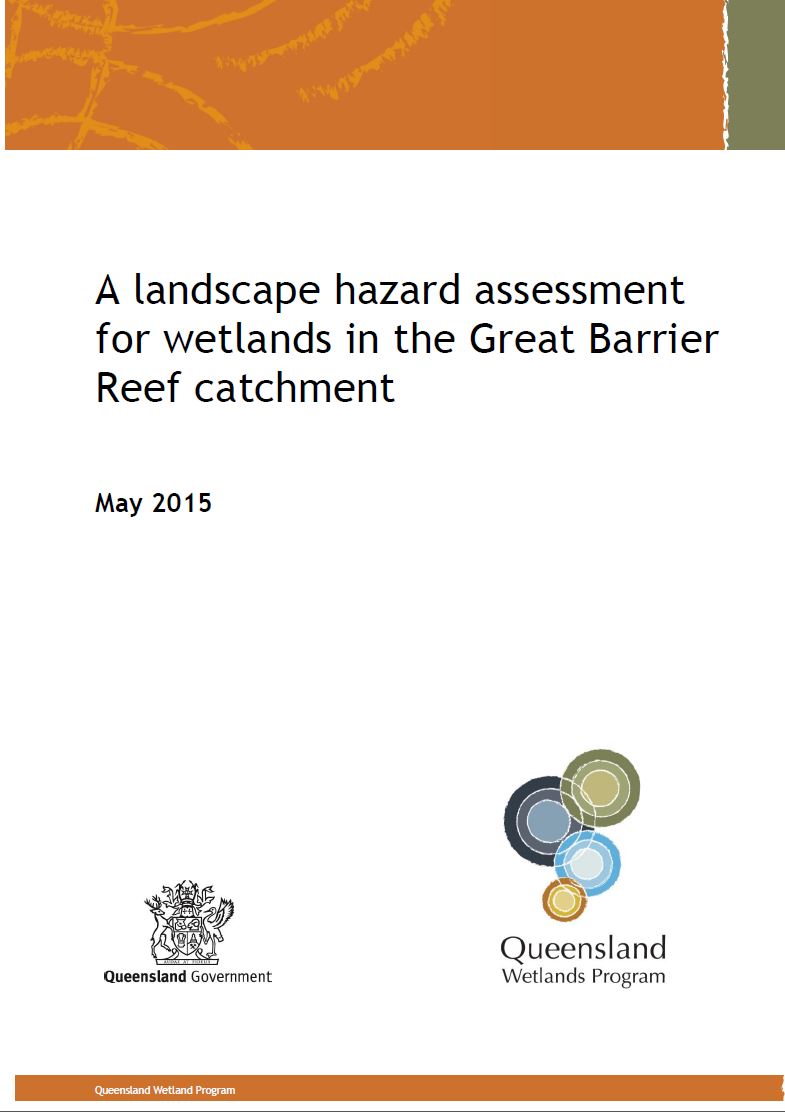|
|
PressuresThe role that wetlands play in promoting a healthy environment was previously not well understood. Lack of awareness and understanding of their importance has been the greatest threat to their survival. With more than 88% of Queenslanders now living within 50km of the coast, the pressures on coastal wetlands are immense.
Quick facts
Many pressures affect wetlands. Some can lead to a loss of wetlands entirely (see: Wetlands—State of the Environment (Pressures Chapter) 2011[1]), others may alter the components and processes of the wetland and affect how it functions, thereby impacting on its biodiversity and values. Pressures can result from underlying human activities (drivers) including population dynamics, economics, technology and climate.
Pressures on wetlands can occur across a range of scales. Their effect can vary depending on a number of factors including intensity, landscape setting, type of wetland (lacustrine and palustrine, riverine and marine and estuarine), sensitivity of the wetland to the pressure, frequency of the pressure and the management in place to mitigate the impacts. Pressures affecting wetlands may be located a long way from the wetland itself, e.g. a dam at the top of a catchment may significantly alter the hydrology of a downstream wetland. It is important that wetlands are managed from a whole-of-landscape perspective to help ensure pressures are addressed at appropriate scales. Direct pressures on wetlandsDirect pressures on wetlands include:
Indirect pressures on wetlandsIndirect pressures on wetlands include:
A changing climate will compound the pressures above. Rising sea levels will effect the landward movement of estuarine wetlands, resulting in pressure on existing freshwater wetlands which have little opportunity to migrate landward. Extreme weather events associated with climate change, including higher temperatures, more intense rainfall and droughts will result in increased pressure on wetland ecosystems. A landscape hazard assessment for wetlands in the Great Barrier Reef catchment This report details the approach taken to assess hazards to lacustrine and palustrine wetlands in the Great Barrier Reef (GBR) catchments in Queensland. It provides a landscape scale assessment of hazard (as opposed to fully quantified 'risk') arising from land-use, and is conducted as a desktop GIS analysis. The 2022 Scientific Consensus Statement for the Great Barrier ReefThe 2022 Scientific Consensus Statement for the Great Barrier Reef brings together the latest peer reviewed scientific evidence to understand how land-based activities can influence water quality and ecosystem condition in the Great Barrier Reef and how these influences can be managed. The 2022 Scientific Consensus Statement is used by policymakers as a key evidence-based document for making decisions about managing Great Barrier Reef water quality. It is one of several projects that provides supporting information for the design, delivery and implementation of the Australian and Queensland government’s Reef 2050 Water Quality Improvement Plan 2017–2022. The Plan defines objectives and targets related to water quality improvement, identifies spatial management priorities and describes actions for improving the quality of the water that enters the Great Barrier Reef from the adjacent catchment area. The three primary outputs of the 2022 Scientific Consensus Statement are Evidence (30 questions across 8 themes), Summary, and Conclusions. The Scientific Consensus Statement addresses 30 priority questions (the Evidence), and the questions are organised into several Themes: values and threats, sediments and particulate nutrients, dissolved nutrients, pesticides and other pollutants, and human dimensions and emerging science. A series of topic summaries collate evidence across the questions, including wetlands, coral reefs and seagrass. The 30 syntheses of evidence for each question was independently peer reviewed and provided the supporting evidence for the 2022 Scientific Consensus Statement Summary and eight overarching Conclusions. The Conclusions were agreed by 35 experts using a formal consensus process. The Summary and Conclusions were endorsed by the Reef Water Quality Independent Science Panel (ISP), and reviewed by three independent eminent experts. Additional information
Pages under this sectionReferences
Last updated: 22 March 2013 This page should be cited as: Department of Environment, Science and Innovation, Queensland (2013) Pressures, WetlandInfo website, accessed 8 May 2025. Available at: https://wetlandinfo.des.qld.gov.au/wetlands/management/pressures/ |

 — Department of the Environment, Tourism, Science and Innovation
— Department of the Environment, Tourism, Science and Innovation



